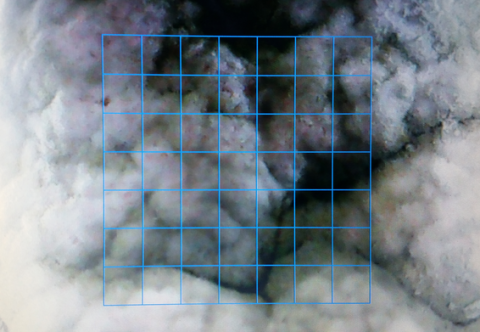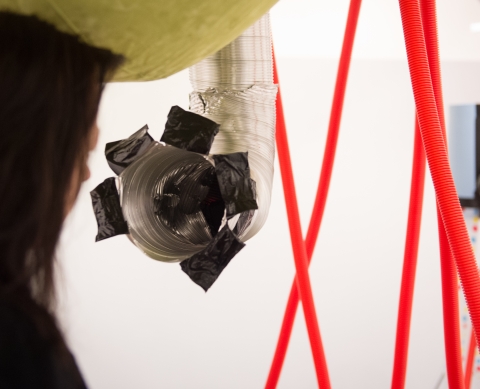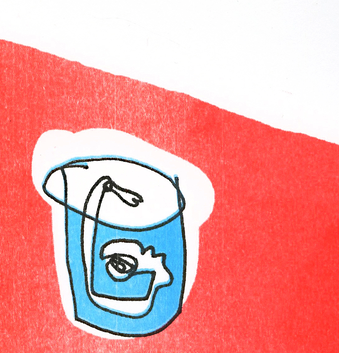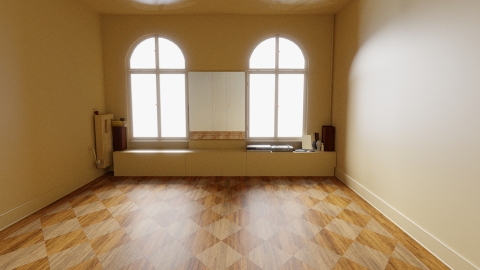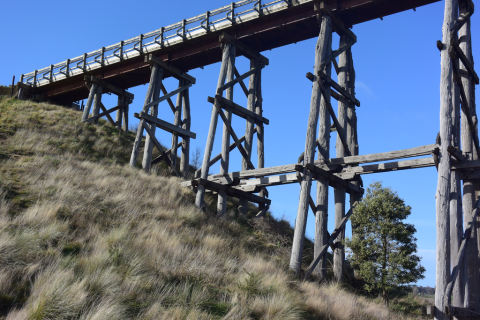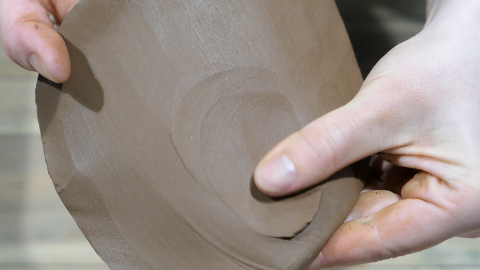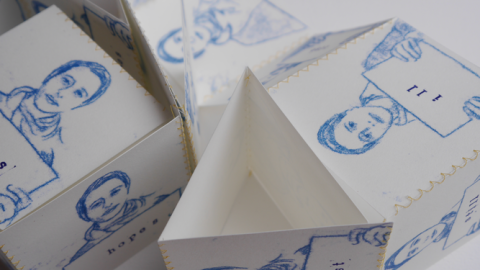Editorial
Nos últimos meses temos presenciado um debate acirrado sobre a atuação do ruangrupa na Documenta 15. Enquanto o público tenha focado principalmente sobre as questões do antissemitismo, responsabilidade curatorial e o contexto político e histórico da Documenta, emergiu também o esboço de um problema muito familiar aos editores do Journal for Artistic Research; como podem ser navegadas as águas traiçoeiras entre a liberdade artística e a responsabilidade coletiva sob condições de uma especificidade e multiplicidade incrementadas? Posto que todo projeto de pesquisa artística ao procurar conhecimentos originais produzirá alguma ruptura no campo, quem se responsabilizará por tais rupturas e repercussões que possam ocorrer? Os artistas, editores e curadores, painéis consultivos ou de pareceristas pelos pares? Quais são as práticas que se podem esperar? A escolha deste ângulo de argumentação aqui não implica em nenhuma resposta direta aos problemas específicos da Documenta 15, os quais ocuparão os vários interventores e comentadores por algum tempo por vir.
Ilustrarei o problema que está me ocupando com a ajuda de dois textos, ambos publicados neste ano na Art Agenda’s Criticism, na seção ‘reportagens’ ou ‘repostas da Documenta 15’. O primeiro deles ‘Contested Histories: on Documenta 15’ escrito por Jörg Heiser publicado dia 29 de junho, e o segundo ‘A short and incomplete history of bad curating as collective resistance’, por Gregory Sholette, publicado dia 21 de setembro. Sugiro a leitura completa de ambos textos para a compreensão de minha explanação mais genérica sobre as posições específicas dos autores, bem como também sobre a própria Documenta 15.
O texto de Heiser conclui que a ‘ideia da Documenta como uma tábula rasa, como uma plataforma neutra para a expressão artística global, foi finalmente, e em última análise, exposta como ela é: uma ilusão’. No lugar da neutralidade, ele vê a responsabilidade de apropriada[mente] context[ualizar] e refletir histórica (relativo ao uso dos arquivos materiais) e contemporaneamente (relativo aos valores simbólicos em um contexto global). Isso, Heiser acrescenta, em resposta à comissão consultiva da Documenta 15, não pode ser realizado ‘a distância’. Trabalhos de arte que viajam no tempo e no espaço não são neutros, por assim dizer, mas demandam escolha e julgamento no local de suas re-apresentações.
Sholette também reconhece problemas quanto a contextualização e reflexão em sua ‘resumida e incompleta história’. Entretanto, seu texto foca o que ele descreve como sendo um problema mais fundamental, nomeadamente a ‘possibilidade de que a sombra do antissemitismo esteja realmente servindo a um mundo artístico hostil, à imprensa liberal alemã, e a ideólogos racistas de direita como uma justificativa equivocada para condenar esse experimento em sua totalidade’. Sholette não advoga que os arquivos materiais devam ser mais contextualizados nem que as questões que dominam parte do mundo, tais como a guerra na Ucrânia, devam ser reconhecidas, aceitando-se a parcialidade e uma incompleta representação quando a neutralidade não é mais uma opção. ‘É claro que a descentralização do processo decisório pode implicar em uma perda parcial de controle’ Sholette sugere, citando a fala da Casa do Povo, e mais enfaticamente sugerindo que a apresentação do ruangrupa na Documenta não se tratava realmente de um projeto curatorial, mas de uma infraestrutura para subverter a posição presumidamente central da Documenta em um contexto global.
Os pesquisadores artísticos acharão muito familiar a convocação a uma reflexão. Um considerável número de programas de doutoramento são construídos na presunção de que textos reflexivos são um requerimento para defender a arte enquanto pesquisa. Embora a reflexão tenha sido com sucesso considerada parte do cânone da pesquisa, além de ter sido endossada por muitos pesquisadores artísticos, será que ela realmente oferece uma solução adequada a problemas da pesquisa artística em geral? Como o caso da Documenta ilustra, a reflexão tem sempre sido exigida para compensar problemas subjacentes mais sérios quanto a distribuição de significados histórica, material e culturalmente desiguais. Muitos pesquisadores artísticos trabalham sob condições relativamente complexas, e eu argumentaria que não há apenas um entendimento: a reflexão talvez seja insuficientemente adequada para conduzir os ganhos epidêmicos da pesquisa artística, mas também que possa comprometer o trabalho. Deveriam os artistas ser autorizados a apresentar uma investigação que não esteja plenamente assegurada por uma reflexão? Até que extensão se pode ir se necessário?
Isto toca num problema mais principal: como no caso da Documenta, é claro que a pesquisa artística não oferece uma ‘plataforma neutra’ para a pesquisa artística. Em ambos os casos, entretanto, a reflexão parece neutralizar o descontentamento (aquilo que não é convincente suficientemente), ou seja, pode-se explicar esse trabalho de arte em seu contexto ou articular a contribuição de conhecimento dessa obra. Existe, portanto, a sugestão de que a reflexão e a contextualização possam trabalhar através do que é separado histórica, política e disciplinarmente, retendo a ideia de neutralidade nesse (elevado) nível. Todavia, com o discernimento da não-neutralidade institucional deve vir um entendimento de todas as práticas, incluindo-se aquelas reflexivas, que não são neutras também e que a base para o encontro e a apreciação deva ser primeiramente e conjuntamente inventada. Ainda assim, independentemente dos problemas acerca da reflexão, é crucial exigir um mais detalhado e específico engajamento com o que é oferecido em cada momento da apresentação.
Parece que limitar a reflexão signifique, necessariamente, apoiar a posição de Sholette, que ruangrupa estava mais preocupado como se dá a distribuição dos recursos e dos agenciamentos, se não fosse o fato de que aqui a apresentação de arquivos parece estranhamente desculpada no processo. Para se limitar a demanda reflexiva imposta a artistas e ativistas, encontramos o que pode ser descrito como a ‘inocência do arquivo’ ou uma certa crença na factualidade das coisas como também dos trabalhos de arte, como se eles mesmos não fossem fabricados ou refabricados para uma específica apresentação. Aqui, então, encontramos uma espécie diferente de neutralidade associada com a materialidade dos objetos. Enquanto é importante associar alguma forma de agenciamento independente às práticas artísticas e aos trabalhos de arte, parece ingênuo assumir formas de encontros diretos com as práticas e obras, ao menos não com aquelas cujos parâmetros institucionais são altamente codificados.
Quando olhamos o campo da pesquisa artística deste ponto de vista, confirmamos a não neutralidade de qualquer parâmetro do trabalho epistêmico. Isso se aplicaria não apenas à maioria dos espaços artísticos mas também à academia, com a qual esse periódico se associa. Nem a reflexão, nem os objetos artísticos, nem as práticas elas mesmas podem ser uma exceção a isso. Reflexões textuais ou apresentações de arte, por exemplo, apenas aparentemente oferecem âncoras neutras. Ao contrario, a atenção necessita dar uma guinada aos modos nos quais esse ou outros elementos são postos em jogo, em particular no que diz respeito à autoridade da curadoria, à distribuição de recursos e aos conhecimentos que são habilitados ou desativados no processo. Nesse sentido, os projetos de pesquisa artística podem articular um todo mais complexo, não neutro, que não é reflexivo de forma exacerbada nem apresentado de forma subestimada. Isso envolve um certo grau de risco, mas também um envolvimento intenso de todos os criadores, co-criadores e re-criadores, para além dos vários preconceitos sobre o que constitui a arte, o conhecimento ou a crítica.
Visto desse ângulo, há muito terreno comum entre os desenvolvimentos da pesquisa artística e o que foi manifestado nesse ano na Documenta. Embora devamos identificar um problema comum dentre as infraestruturas do conhecimento, a experiência com a pesquisa artística tem nos ensinado que os pontos usuais de referência tanto da arte ou da reflexão não são suficientes para suportar o trabalho que está em aberto, (o que toda pesquisa em tese deveria ser). Nossa preocupação, portanto, é dirigida em relação às operações, desencadeadas no sítio de articulações específicas da pesquisa artística e à questão de quanto mais ou quanto menos essas operações são capazes de reconfigurar o terreno. Tem havido contribuições de alcance maior ou menor, mas parece que iniciamos a abarcar a ausência das soluções generalistas a problemas específicos.
Michael Schwab
editor chefe

